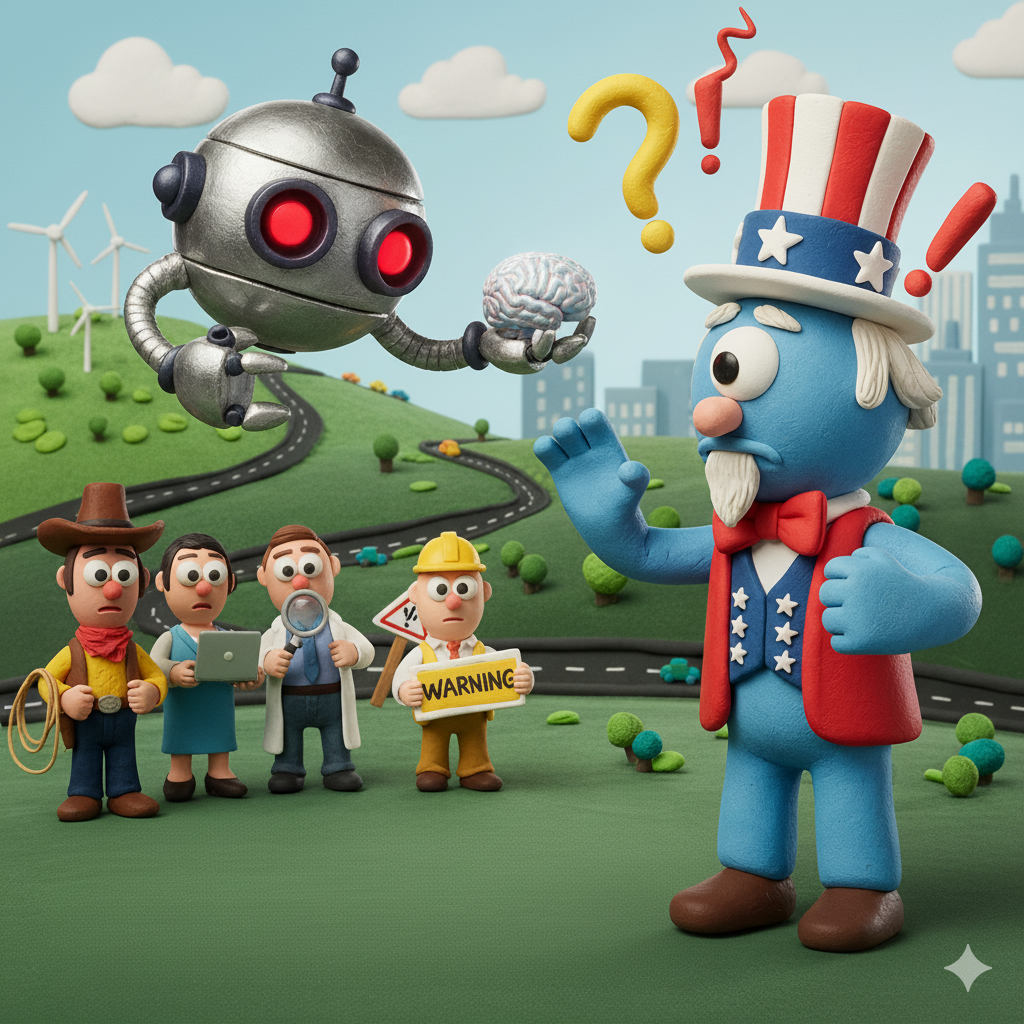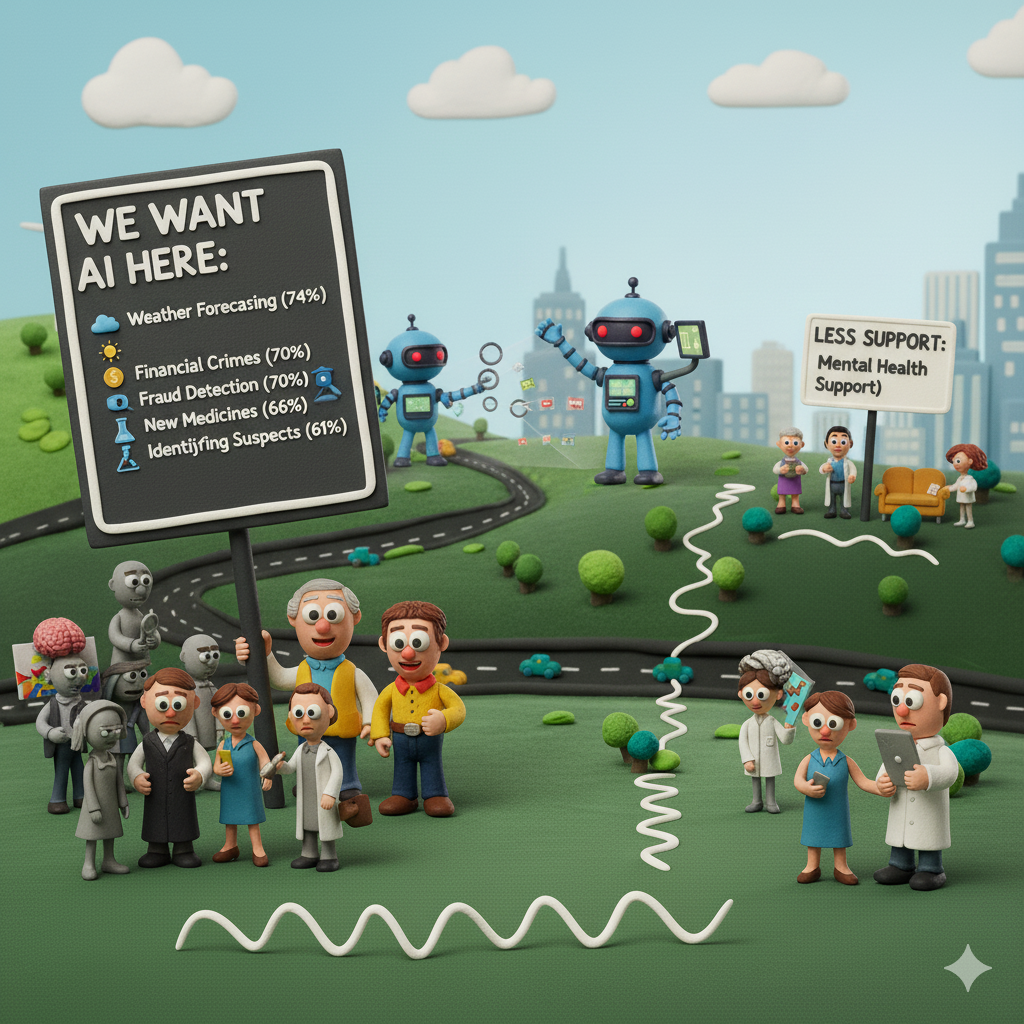America on AI: We’re Cautious But Curious
If AI were a new colleague, most Americans would invite it to the meeting, let it take notes, and then keep a close eye on it. Those same folks would most likely distrust the notes that had been taken and then accuse their new AI colleague of destroying everyone's creativity. That is the vibe in Pew Research Center’s September 2025 report, How Americans View AI and Its Impact on People and Society.
What Americans actually feel right now
Concern vs. excitement. 50% are more concerned than excited about AI’s growing role in daily life (up from 37% in 2021). Only about one in ten is more excited than concerned.
Openness to assist. 73% are willing to let AI help at least a little with day‑to‑day activities, though only 13% would let it assist a lot.
Control. 57% feel they have not much or no control over whether AI is used in their lives; 61% want more control (up 6 points since 2024).
Detecting AI content. 76% say it is important to know whether content was made by AI or humans, yet 53% are not confident they can tell.
Perceived impact on abilities. More Americans think AI will erode abilities than improve them: 53% say it will make people worse at thinking creatively (16% say better); 50% say worse at forming meaningful relationships (5% better); 40% say worse at making difficult decisions (19% better); 38% say worse at solving problems (29% better). Younger adults are even more skeptical on two fronts: under‑30s vs 65+ say “worse” for creative thinking (61% vs 42%) and forming meaningful relationships (58% vs 40%).
AI literacy. 73% say it is extremely or very important for people to understand what AI is.
Who is actually adopting
Awareness is near universal. 95% of U.S. adults have heard at least a little about AI. The share who have heard a lot jumped from 26% in 2022 to 47% in 2025.
Gaps by age and education. 62% of adults under 30 have heard a lot about AI, compared with 32% of those 65 and older. By education, 60% of postgraduates vs 38% with a high school diploma or less say they have heard a lot.
Interaction frequency. 62% interact with AI at least several times a week. One in three under‑30s say several times a day, while 54% of adults 65+ interact less than several times a week.
These adoption patterns matter because they influence who builds skills fastest and where your internal champions will come from.
Where Americans want AI (and where they do not)
Roles with majority support (at least a small role):
Forecasting the weather (74%).
Searching for financial crimes (70%).
Searching for fraud in government benefits claims (70%).
Developing new medicines (66%).
Identifying suspects in a crime (61%).
Providing mental health support (46%).
Roles with strong rejection (no role at all):
Advising people about their faith in God (73%).
Judging whether two people could fall in love (66%).
Making decisions about how to govern the country (60%).
Risks vs. benefits, in Americans’ own words
How people rate the trade‑off. 57% rate the risks of AI for society as high or very high; 25% rate the benefits as high or very high; 15% rate both risks and benefits as high.
Why people see high risks. Top themes: erosion of human abilities and connections (27%); misinformation and difficulty telling real from AI‑made content (18%); lack of control or runaway tech (17%); nefarious uses like faking likeness or voice (11%).
Why people see high benefits. Top themes: efficiency and time savings (41%); expansion of human and technological abilities leading to scientific and medical gains (23%).
Why some see low benefits. Most commonly, concern about erosion of human abilities and social connection.
If adoption slows, advancement slows
Here is the uncomfortable truth for leaders: If AI adoption stalls, progress will stall with it. Not because the tech suddenly gets worse, but because the benefits add up only when people actually use it.
Three reasons that matters:
Productivity gains come from practice. Among those who see high benefits, the top reason is efficiency. Many respondents point to time saved and streamlined work. If organizations pause adoption, they pause the learning curve that turns pilot wins into everyday gains.
Talent divides widen fast. The groups leaning in today are younger and more educated. If companies freeze or slow usage, they limit exposure for the rest of the workforce and deepen skill gaps. That is how an internal “AI haves vs. have‑nots” divide is born.
Innovation follows confidence, not fear. The public wants control and transparency. Organizations that pair adoption with clear controls, audit trails, and content authenticity checks address the very concerns Pew highlights. Slow adoption without better governance is the worst of both worlds. You lose momentum and you still do not build trust.
Why this is important for executives
Make AI literacy a priority. With most Americans saying it is important to understand AI, training is not a perk. It is a culture lever that reduces fear and surfaces responsible use cases.
Start where the public already says “yes.” Focus on forecasting, risk detection, large‑scale pattern spotting, and R&D assist. These areas align with higher public comfort and deliver measurable value.
Build visible controls. Meet the desire for control and authenticity with clear policies, approval thresholds, dataset provenance, human‑in‑the‑loop steps, and content disclosure.
Measure and communicate value. Track time saved, quality lifted, and risks reduced. Share the wins. The narrative moves from fear to results when the benefits are documented.
Bottom line
Overcoming the fear of new technology is nothing new. We went through the same thing when the calculator was invented and became mainstream. Then it was computers. Then the internet. Getting your company trained up on AI and show your employees how to properly use it can take your business further than running from AI and continuing to work the same way you have been. Thoughtful adoption is the accelerator. Slowing to a crawl would slow advancement with it.
*Source: *Pew Research Center, “How Americans View AI and Its Impact on People and Society,” Sept. 2025.



